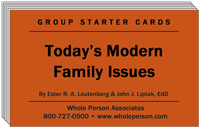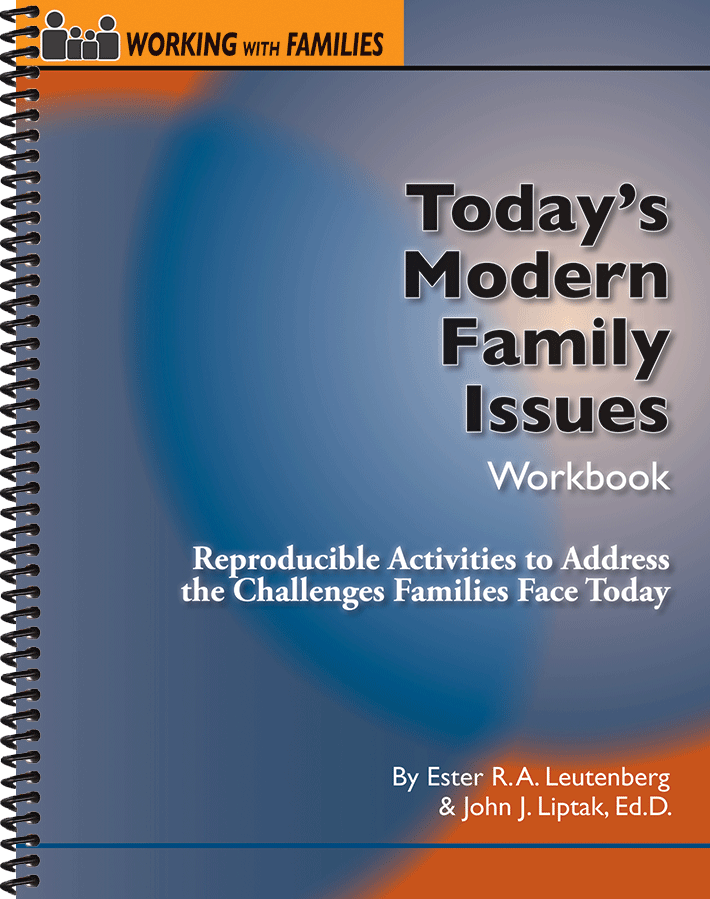Today's Modern Family Issues
Reproducible Activities to Address the Challenges Families Face Today
The beauty, distinction, and uniqueness of this particular series is:
EVERY family member has the opportunity to complete a scale on how they feel about themselves, about other family members, as well as how they perceive the other family members feel about them.
Societal changes have altered how people now think about family life and recognize various family structures. Although we have an idealized idea of a "perfect" or "normal" family, there is no such thing. All families have their unique structures, challenges, and strengths. Life in these family structures can be frustrating yet satisfying.
Family structures are continually changing. Today's modern family often no longer consists of a mother, father, and children in one household. Modern families are much more complex and harder to define and describe.
To deal successfully with the various family issues in today's modern families, family members often need to examine and explore their family structure, patterns, relationships, and traditions. The Today's Modern Family Issues Workbook provides assessments and self-guided activities to help family members explore old patterns of interaction and behavior which may no longer be effective and identify ways to develop more effective interactions and behaviors. Many choices of self-exploration assessments and activities are provided for family members to use collaboratively with other family members to build a healthy family unit.
The Today's Modern Family Issues Workbook can be used independently or as part of an integrated curriculum. You may administer any of the assessments and the guided self-exploration activities to an individual or multiple family members with whom you are working, or you may distribute any of the activities over multiple sessions. Feel free to pick and choose those assessments and activities that best lead to the desired outcomes. The assessments and activities are divided into four chapters to help you identify and select assessments easily and quickly:
Chapter I: Family Identity
This chapter helps family members determine how effective they have been in establishing a new family identity of their own.
Chapter II: Getting Along
This chapter helps family members explore how well they get along, communicate and resolve conflicts.
Chapter III: Connecting
This chapter helps family members identify how committed they are to each other and how often they are tolerant and enjoy spending time with each other.
Chapter IV: Rules & Boundaries
This chapter helps family members explore how successfully discipline, rules, and boundaries have been established for the family unit.
This workbook is also available in PDF eBook format, making it simple to store on your computer or mobile device and to access with a PDF viewer. The PDF format allows you to easily print copies of the activities and worksheets during therapy and counseling sessions.
 Today’s Modern Family Issues Card Deck
Today’s Modern Family Issues Card Deck
Need a creative way to start your session? Use the Today’s Modern Family Issues Card Deck. The open-ended questions will break the ice with both kids and adults and stimulate conversation. Use them alone or in conjunction with the corresponding page in the book.
Sample Questions:
Change can bring with it a sense of loss. The familiar is often replaced with the unfamiliar and can be accompanied by a sense of loss of situations, people and activities. What have you lost?
Who are the family members whom you might praise more for what they do as part of your family? What can you say to some of these family members?
What behaviors do you need to alter to get along better with other members of your family? How will you make these changes?


